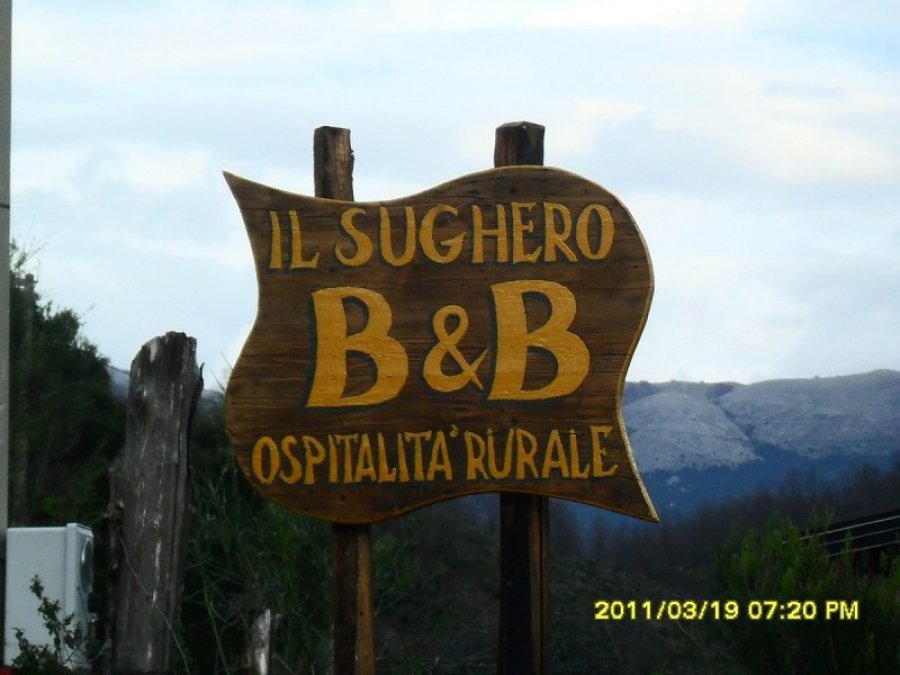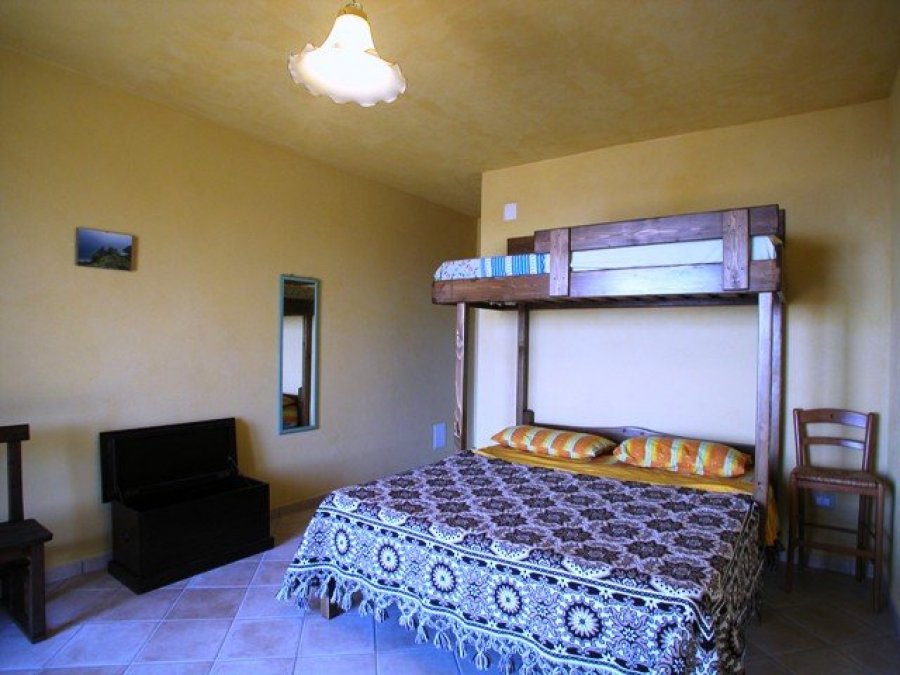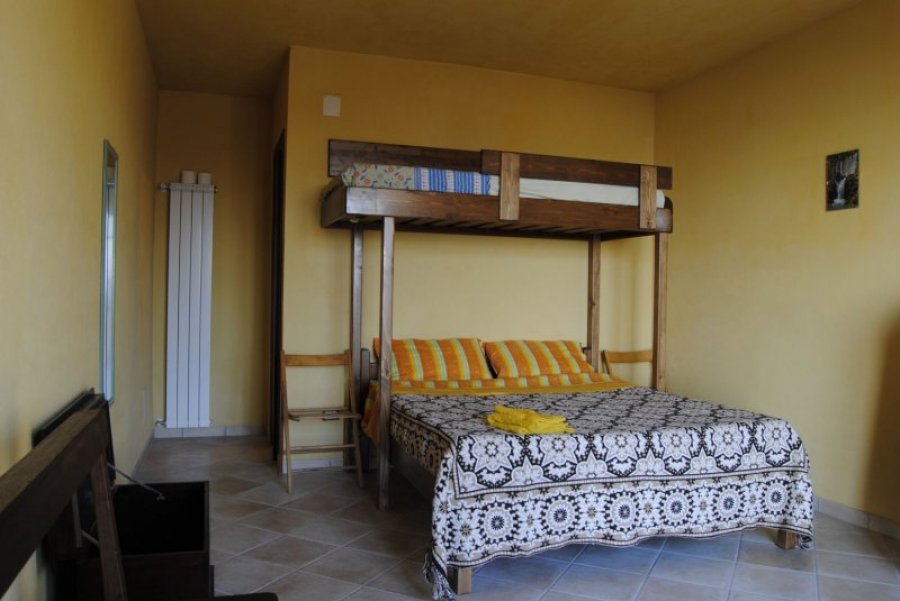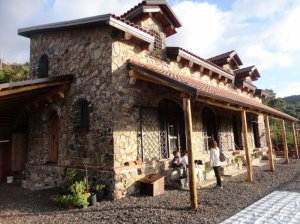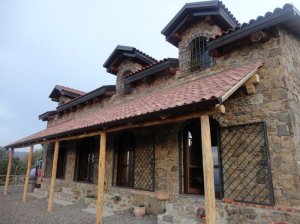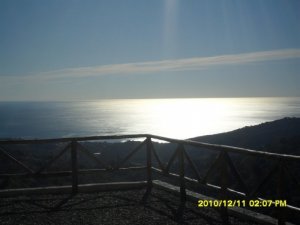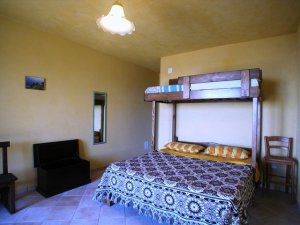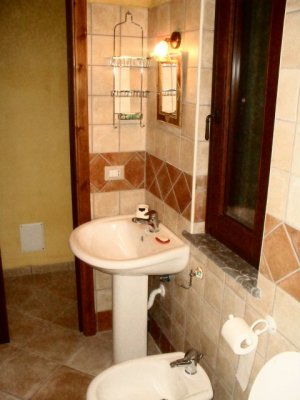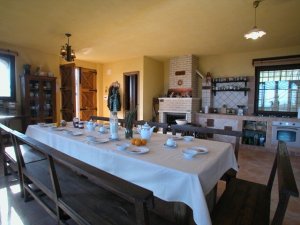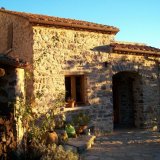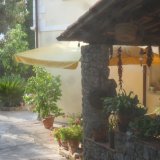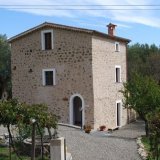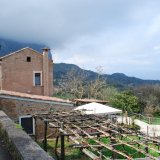Contextualization and deep motivations
In order to preserve the historical landscape memory of the site, the pre-existing building has been restructured (not abandoned as usual) to preserve historical and landscape memory of the place.
According to this procedure, an analysis of the pre-existences has been conducted and it has inspired some methodological formal choices: original exposure of the building has been preserved as the materials through a real ‘dismantling’ (not a demolition), leaving some significant elements; in compliance with the present norms about planning permission and the precepts about antiseismic and hydro-geologic adjustment for the area (seism. S=9 and ‘low’ hydrogeologic risk), the way suggested by municipal bureau has been followed. In order words, a reinforced concrete has been used to build guaranteeing all the safety parameters.
After that, only original materials have been chosen to rewrite the architectonic text. Some materials have been employed by the dismantling such as the local stone (except the arches).
Others have been replaced with similar ones due to un-recyclability of the pre-existent ones, such as solid chestnut for the covering, hydraulic lime for mortar (adding concrete only on the outside), tiled floor, iron grating for the openings, solid chestnut main entrance, and iron and forged by hand hardware.
A philological recovery of the materials has been followed by a partial technical re-functionality o the materials because their re-use has been integrated into the originally absent reinforced concrete building. Moreover, technological - and inspired by a sustainable construction - improvements have been made, reducing plastic materials as far as possible.
The recovery has been motivated by a particular attention to the landscape, trying to create a harmonious dialogue between the new building and the context apart from the willing to build ‘zero km’, using local materials and recovering local visual identities.
The change from rural building to residential/hotel tells the shifting direction about the users and the use of the place (see the theoretical documentation). For this reason a volumetric increase has been occurred with loft/attic with 4 openings in the roof to guarantee more brightness indoors (very nice wooden loft).
In particular:
the local stone has been employed in its original function (external walls) despite a partial functional shift (from bearing wall to self-bearing, filling, covering and parallel to beams and pillars);
Ancient clay tiles from the dismantling have been re-used in part as a decoration and functional in stone brickwork, in part kept to embellish the furniture both indoors and outdoors;
Residual wood from covering decorates the furniture both indoors and outdoors since it has not bearing functions any more as the iron gratings, since they have been found in small quantities and in bad conditions.
In this way historical, landscape and architectural memory of the place are recovered, although indirectly.
Finally, a part of the original wall has been preserved by the period lime now corresponding with the boundary wall in order to preserve a material trace of the rural building. This part coincides to the North-East part of the foundation leaning against the underlying rock.
Specifications
Casale Il Sughero has achieved Building Energy Performance 'A' Classification.
The building is located almost on the top of a hill, on one side of watershed area, at altitude 380 metres a.s.l., South/South-East exposure reproducing an old rural building dating back to the 18th century that has been restructured. For these reasons, according to the bio-building principles, 70% of openings are on the Southern front, 20% on the Northern front, and 10% on the Western front.
In addition, on the Southern front, big French windows have been realized to facilitate the increase of brightness in winter daytime. In the same time, thanks to wooden frames with low-emission glasses, there is a thermal tightness in winter and a filtering in summer. As a result, the houses is hot in winter and cool in summer without air conditioners and using only renewable energetic sources such as solar energy (solar panels) and thermal power from wood (fireplace).
Building insulation has been achieved because of insulating panels in natural materials and a biologic roof in chestnut wood with visible beams. It has been treated with total insulating system in natural lengths and wood fibre.
Hydraulic lime has been preferred in order to control the humidity in the house, along with a high transpirability of external walls. Our hydraulic lime is recommended for conservative restorations of buildings having historical and artistic interest (pure natural lime NHL 3.5 up to standard (EN 459-1) guaranteeing porosity, hygroscopicity and transpirability) and has been coloured with natural soil.
An ancient floor for the living room has been recovered. It belongs to the noble Ceramics School of Vietri sul Mare and dated back to XIX century, coming from the Tajani Brothers’ tile-kiln and recovered in an ancient palace in the historic centre of Vibonati.
An old aged carpenter has made a traditional main entrance built in Cilentan style and solid chestnut wood with iron elements and hand-forged.
Electromagnetic shielding of electrical system trough graphite paint and shielding cables have been planned to reduce electromagnetic fields whereas low-emission and household appliances with at minimum A+ classification to reduce consumes.
Source water sterilization has been carried out trough a sophisticated system of drinking water treatment with bactericidal UV bulbs.
The hydraulic and sewerage system aims to reduce plastics so it consists of total draining of sewage trough phytodepuration (depuration of sewage trough depurating plants and natural bacteria and to zero impact inside a dry-stone lake in the soil). This is the first active phytodepuration system in Cilento.
